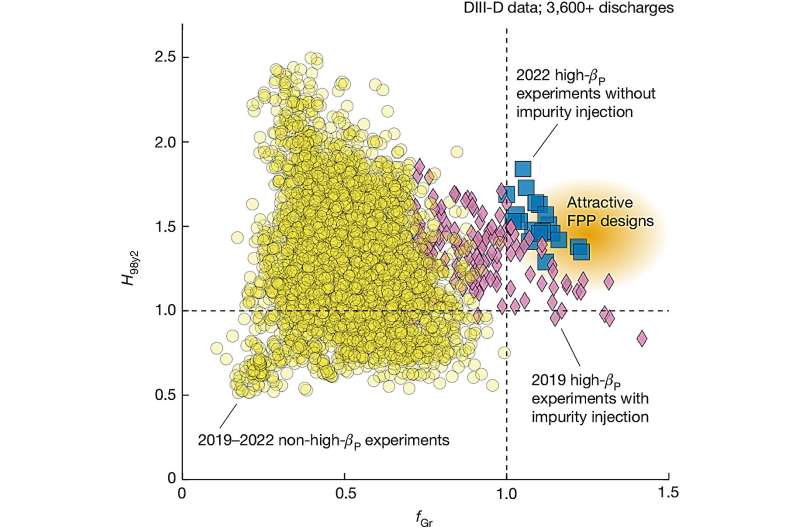April 29, 2024 report
This article has been reviewed according to Science X's editorial process and policies. Editors have highlighted the following attributes while ensuring the content's credibility:
fact-checked
peer-reviewed publication
trusted source
proofread
Physicists overcome two key operating hurdles in fusion reactions

A team of physicists from several institutions across the U.S. working with a colleague from China, at the DIII-D National Fusion Facility, in San Diego, California, has devised a way to overcome two key hurdles standing in the way of using fusion as a general power source.
In their paper published in the journal Nature, the group describes how they devised a way to raise the density of the plasma in their reactor while also keeping it stable.
Scientists at various sites around the world have been working for several years to figure out how to use fusion reactions to create electricity for general use—thereby freeing the world from using coal and gas fired power plants that spew greenhouse gases into the atmosphere. But it has been a long and difficult road.
It was just in the past couple of years that researchers were able to show that a fusion reaction could be made to sustain itself, and that more power could be produced than was input into such a system.
The next two hurdles to overcome are increasing the density of the plasma in the reactor and then containing it for extended periods of time—long enough for it to be useful for producing electricity. In this new study, the research team has devised a way to do both in a tokamak chamber.
To contain the plasma as its density was increased, the team used additional magnets and bursts of deuterium where needed. They also allowed for higher densities at the core than near the edges, helping to ensure the plasma could not escape. They held it in that state for 2.2 seconds, long enough to prove that it could be done.
They also found that during that short time span, the average density in the reactor was 20% over the Greenwald limit—a theoretical barrier that had been predicted to mark the point at which adding pressure would escape the magnetic field holding the plasma in place.
They also found that the stability of the plasma was H98y2 above 1, which means that the experiment was successful.
The research team acknowledges that their experiment was done in a very small reactor—one with a diameter of just 1.6 meters. For such an achievement to be considered fully successful, it will have to be done in a much larger reactor, such as the one currently under construction in France, which will have a diameter of 6.2 meters.
More information: S. Ding et al, A high-density and high-confinement tokamak plasma regime for fusion energy, Nature (2024). DOI: 10.1038/s41586-024-07313-3
Journal information: Nature
© 2024 Science X Network





















